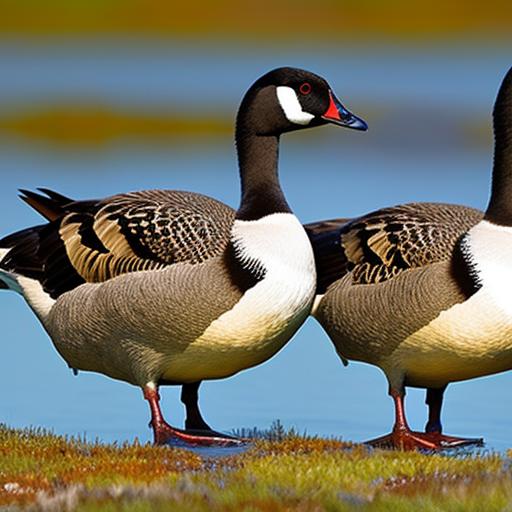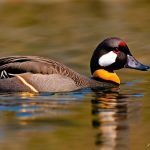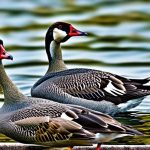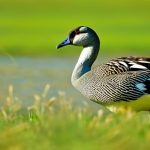Canada geese are a common sight in many parts of North America, known for their distinctive honking calls and V-shaped flying formations. These large waterfowl are highly adaptable and can be found in a variety of habitats, including urban areas, parks, and golf courses. While they may be a beloved symbol of wildlife, managing Canada geese populations is crucial to maintain a balance between human and wildlife needs.
Key Takeaways
- Canada geese are social birds that mate for life and return to the same nesting sites each year.
- Natural deterrents for Canada geese include planting tall grasses and using dogs to chase them away.
- Physical barriers like fences and netting can prevent geese from accessing certain areas.
- Noise and visual deterrents like scarecrows and reflective tape can be effective in deterring geese.
- Habitat modification, such as removing food sources and altering water features, can discourage geese from staying in an area.
Understanding Canada Geese Behavior
To effectively manage Canada geese populations, it is important to understand their behavior. Canada geese are migratory birds, with some populations traveling long distances during their annual migrations. They typically nest near bodies of water, such as lakes or ponds, and prefer open areas with short grass for feeding. Canada geese are social birds and communicate with each other through a variety of vocalizations and body language.
Natural Deterrents for Canada Geese
One approach to managing Canada geese populations is to utilize natural deterrents. Planting native vegetation around bodies of water can create an unattractive habitat for geese, as they prefer short grass for feeding. Installing predator decoys, such as fake coyotes or owls, can also deter geese from nesting in certain areas. Encouraging natural predators, such as foxes or coyotes, can help control geese populations by preying on eggs or young goslings.
Creating Physical Barriers
Physical barriers can be effective in preventing Canada geese from accessing certain areas. Fencing and netting can be installed around bodies of water or other areas where geese tend to congregate. Floating barriers can be placed on ponds or lakes to prevent geese from landing and swimming in the water. Landscaping modifications, such as adding rocks or shrubs along shorelines, can also discourage geese from congregating in certain areas.
Noise and Visual Deterrents
Noise and visual deterrents can be used to scare away Canada geese. Pyrotechnics and noisemakers, such as propane cannons or air horns, can be effective in deterring geese from landing or staying in certain areas. Reflective tape and scarecrows can create visual disturbances that make geese feel uncomfortable and encourage them to leave. Laser pointers and strobe lights can also be used to create visual disturbances that deter geese.
Implementing Habitat Modification
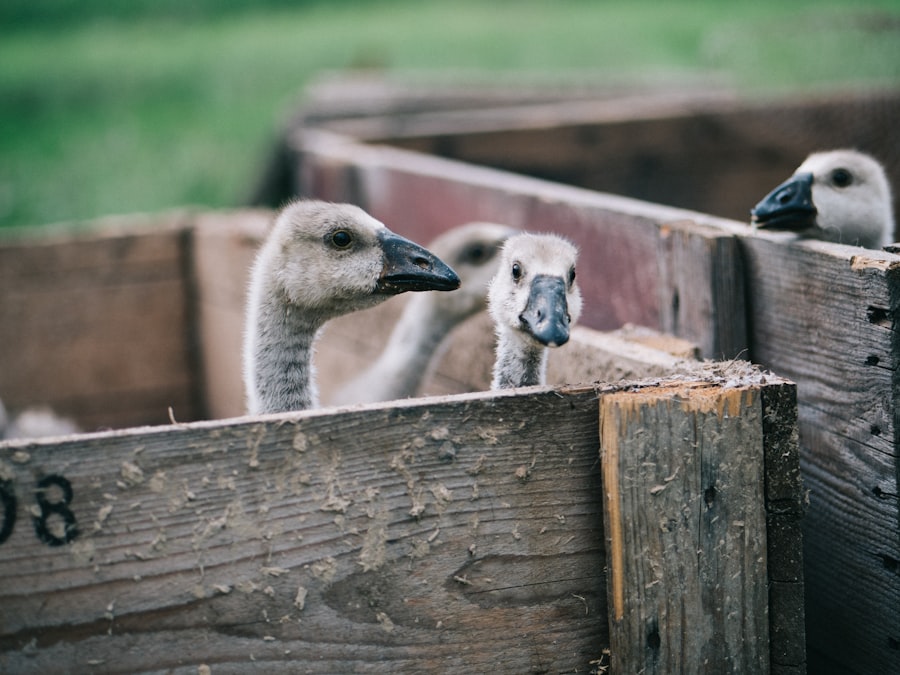
Modifying the habitat can help discourage Canada geese from staying in certain areas. Reducing open water sources, such as by installing fountains or aerators, can make an area less attractive to geese. Removing food sources, such as spilled grain or grass clippings, can also discourage geese from congregating. Modifying nesting areas, such as by removing nests or adding barriers, can prevent geese from successfully breeding in certain areas.
Utilizing Repellents and Scare Tactics
Chemical repellents can be used to deter Canada geese from certain areas. These repellents are typically applied to grass or other surfaces and create an unpleasant taste or smell for the geese. Motion-activated sprinklers can also be effective in scaring away geese when they approach certain areas. Ultrasonic devices emit high-frequency sounds that are unpleasant to geese and can deter them from staying in an area.
Employing Humane Control Methods
Humane control methods should be prioritized when managing Canada geese populations. Egg addling involves shaking or coating eggs with oil to prevent them from hatching. Nest removal can also be effective in preventing geese from successfully breeding in certain areas. Relocation and hazing techniques, such as using trained dogs to chase away geese, can help deter them from staying in certain areas. Sterilization and contraception methods can also be used to control geese populations in a humane manner.
Maintaining Cleanliness to Deter Geese
Maintaining cleanliness in areas where geese congregate can help deter them from staying. Regular cleaning and maintenance of parks, golf courses, and other areas can remove food sources and make an area less attractive to geese. Proper waste disposal, such as securing trash cans and cleaning up spilled food, can also discourage geese from congregating. Minimizing standing water, such as by fixing leaky pipes or draining puddles, can reduce the availability of water sources for geese.
Seeking Professional Assistance
Managing Canada geese populations can be a complex task, and seeking professional assistance is often necessary. Consulting with wildlife experts or local authorities can provide valuable guidance on effective management strategies. Hiring professional geese management services can ensure that humane and effective techniques are used to control geese populations.
Legal Considerations for Geese Management
When managing Canada geese populations, it is important to be aware of federal and state regulations regarding wildlife management. Permits and licenses may be required for certain management activities, such as egg addling or relocation. It is also important to consider ethical considerations when implementing management strategies, ensuring that the welfare of the geese is prioritized.
Managing Canada geese populations is crucial to maintain a balance between human and wildlife needs. Understanding their behavior and utilizing a combination of strategies can help effectively deter geese from certain areas. It is important to prioritize humane and effective management techniques to ensure the well-being of both humans and geese. By implementing these strategies and seeking professional assistance when needed, it is possible to manage Canada geese populations in a responsible manner.
If you’re looking for the best way to keep Canada geese away, you might also be interested in learning about the importance of providing a heater for your chicken coop. A warm and comfortable coop not only ensures the well-being of your chickens but can also deter unwanted visitors like geese. Check out this informative article on poultrywizard.com that discusses the benefits and considerations of using a heater for a chicken coop: https://poultrywizard.com/keeping-chickens/heater-for-a-chicken-coop/.
FAQs
What are Canada geese?
Canada geese are large waterfowl native to North America. They are known for their distinctive black heads and necks, white chinstraps, and brown bodies.
Why do people want to keep Canada geese away?
Canada geese can cause damage to property, create unsanitary conditions with their droppings, and pose a safety hazard in certain areas. As a result, many people seek ways to deter them from congregating on their property.
What are some effective ways to keep Canada geese away?
Some effective methods to keep Canada geese away include using visual deterrents like scarecrows or predator decoys, installing physical barriers like fences or netting, using sound deterrents like noise-making devices, and implementing habitat modification techniques.
Are there any humane ways to keep Canada geese away?
Yes, there are several humane ways to deter Canada geese without causing harm to the birds. These methods include using natural repellents, modifying the habitat to make it less attractive to geese, and employing non-lethal deterrents like visual or sound devices.
Is it legal to harm Canada geese?
Canada geese are protected under the Migratory Bird Treaty Act, which makes it illegal to harm, harass, or kill them without a permit. It is important to use humane and non-lethal methods to deter Canada geese from your property.
Meet Walter, the feathered-friend fanatic of Florida! Nestled in the sunshine state, Walter struts through life with his feathered companions, clucking his way to happiness. With a coop that’s fancier than a five-star hotel, he’s the Don Juan of the chicken world. When he’s not teaching his hens to do the cha-cha, you’ll find him in a heated debate with his prized rooster, Sir Clucks-a-Lot. Walter’s poultry passion is no yolk; he’s the sunny-side-up guy you never knew you needed in your flock of friends!

